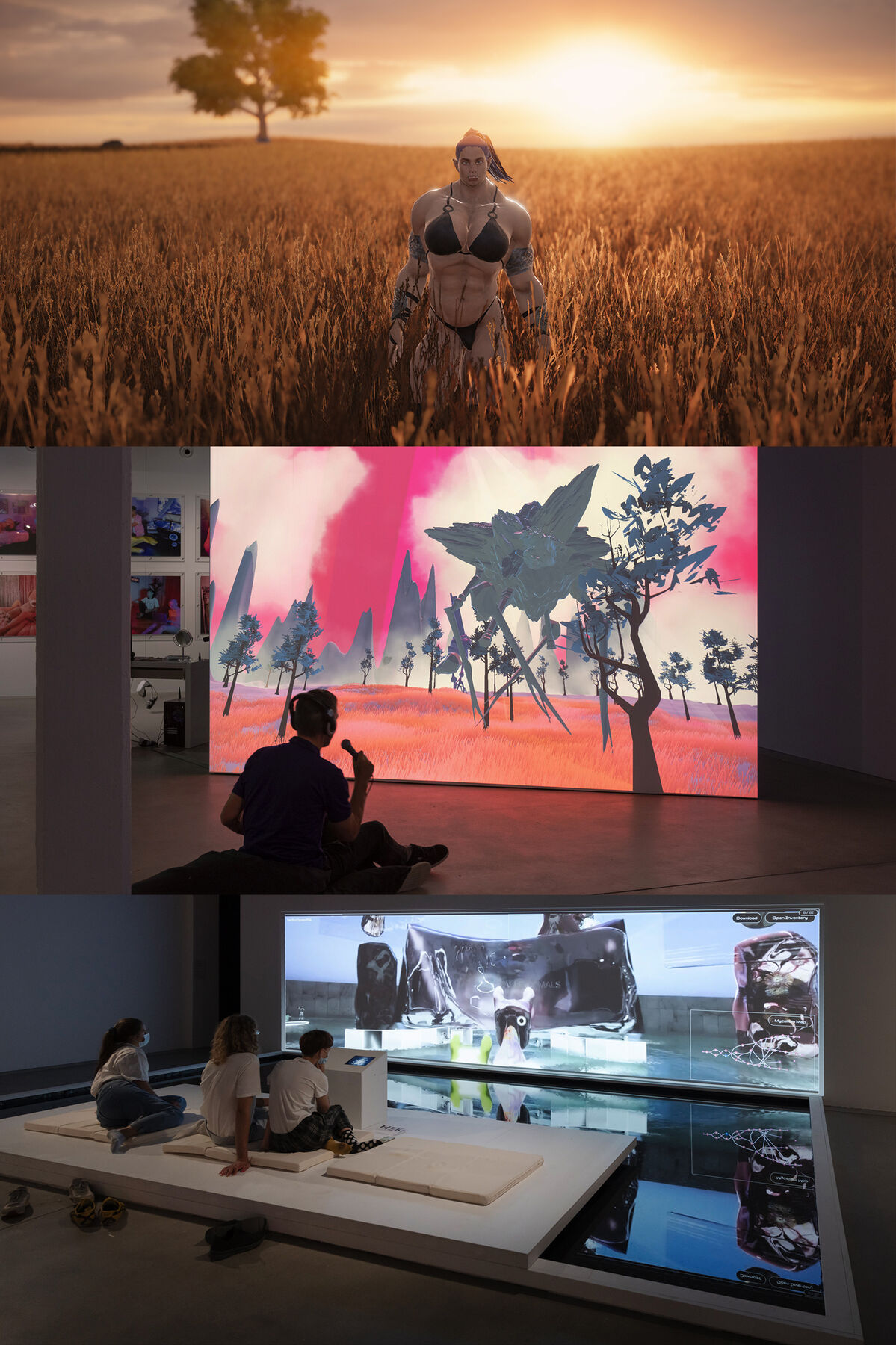088
Boris Magrini
Radical Gaming
Today is aconversation with Boris Magrini about the show ‘Radical Gaming — Immersion Simulation Subversion’ at HeK /House of Electronic Arts Basel

Radical Gaming - Immersion Simulation Subversion
HeK /House of Electronic Arts Basel
The tools we use for design inform the work we create. This is a statement that comes across as so matter of fact, it barley requires even mentioning. What often doesn’t get discussed is what a particular set of tools might omit. What information are those tools not giving you when making design decisions? Robin Evans is a writer on this subject that I refer to ad nauseam, but he highlights time and again that the representational techniques we use as an architect (and I would of course add landscape architect, or designer of nearly any type) highlights some information while suppressing others. Not all information can be made legible simultaneously.
I mention this here because tool sets in design including 3D software packages or physical models often go unchallenged in education and practice. The assumption is that the resultant image, drawing or model are somehow the end result of neutral representation technique that created what we as the designer intended to all along. But strings are always being pulled behind the scenes that influenced each of your decisions as a designer. Your choices weren’t completely all your own, and that’s Ok…because they never will be. The tools you use in design are much more of a ‘design partner’ than you might initially assume. A partner that is making decisions about what you are looking at, about what you can act upon, and this goes largely unquestioned.
If I were to direct this conversation to the architects, landscape architects and urban planners in the audience, I would say that it’s the people (you know, the ones that inhabit and use all these spaces your designing) that are most commonly omitted. Terms like ‘scale figure’, ‘populate the image’ or the one I despise the most, ‘entourage’ are used to show proportion, scale, or stand in for diversity of community in design images, but so much is missing. And this is precisely because geometry is king. Value is placed in form (landscape or building) and how it is articulated.
So why this little lesson? Well, because I’ll be the first to acknowledge that techniques of representation or simulation aren’t going anywhere. But I think it’s important to highlight what exactly ISN’T being articulated. So much is happening today (I hesitate to even list them all here) yet we still defer so heavily to geometry as the site in which success or failure is measured. Experience might be something we can talk a little more about. Experiences that aren’t explained in hand waving poetics but simulated in our representations.
Video games have long been seen as a form of entertainment and at times a form of art. In an earlier Ep number 084, I had a conversation with Aubrey Anable about her book ‘Playing with Feelings, Video Games and Affect’ and what I took away from that conversation is what a powerful tool video games can be for designers. Not because architecture, landscapes or cities can be built and explored like some fly-through renderings, but because people and experience are a central component of the medium. What you see, how you interact with other people and space and more importantly the time spent, experiencing and interacting as yourself, a version of yourself or someone altogether ‘other’ is a unique aspect of the tool that coincides so closely to the environmental and social struggles ahead of us today.
Architecture and design are more than forms and materials. This obvious. But our current tools for design often leave out the interactivity, experience and friction of communicating as people and communities that are central to the worlds we actually live within. Video games do not prevent the design of forms and geometry or material explorations we are more traditionally accustomed to in representation, but they certainly also add levels of simulation; multiplayer interactions, explorations of future communication, time based environmental studies, empathy through role play, and so many others. Video games are most certainly worth our attention.
This week is a conversation about an exhibition currently in Basel Switzerland at the House of Electronic Arts (HEK) that I had a chance to see called ‘Radical Gaming’. I had a chance to talk with the Curator Boris Magrini and we discuss many of these topics and more.
Thanks to Richard Devine for Sample permissions.
Boris Magrini
Boris Magrini (PhD) is curator at HeK (House of Electronic Arts Basel). He organizes exhibitions, workshops and talk series that foster transdisciplinary dialogues between the arts and the sciences. Curated shows include »Future Love. Desire and Kinship in Hypernature« (HeK, Basel, 2018), »Hydra Project« (Sonnenstube, Lugano, 2016), »Grounded Visions: Artistic Research into Environmental Issues« (ETH, Zurich, 2015 – 2016) and »Mutamenti« (Bellinzona, 2007). Some of his recent publications include: »Alternative Visions: Human Futures«, in Transdiscourse 2 – Turbulence and Reconstruction, edited by Jill Scott (Berlin: De Gruyter 2016) and »Hackteria: An Example of Neomodern Activism« (Leonardo Electronic Almanac Vol. 20, Issue 1, 2014). His recent book »Confronting the Machine: An Enquiry into the Subversive Drives of Computer-Generated Art« (Berlin/Boston: de Gruyter 2017) offers an unconventional perspective on digital art and its relation to technology and the society.
